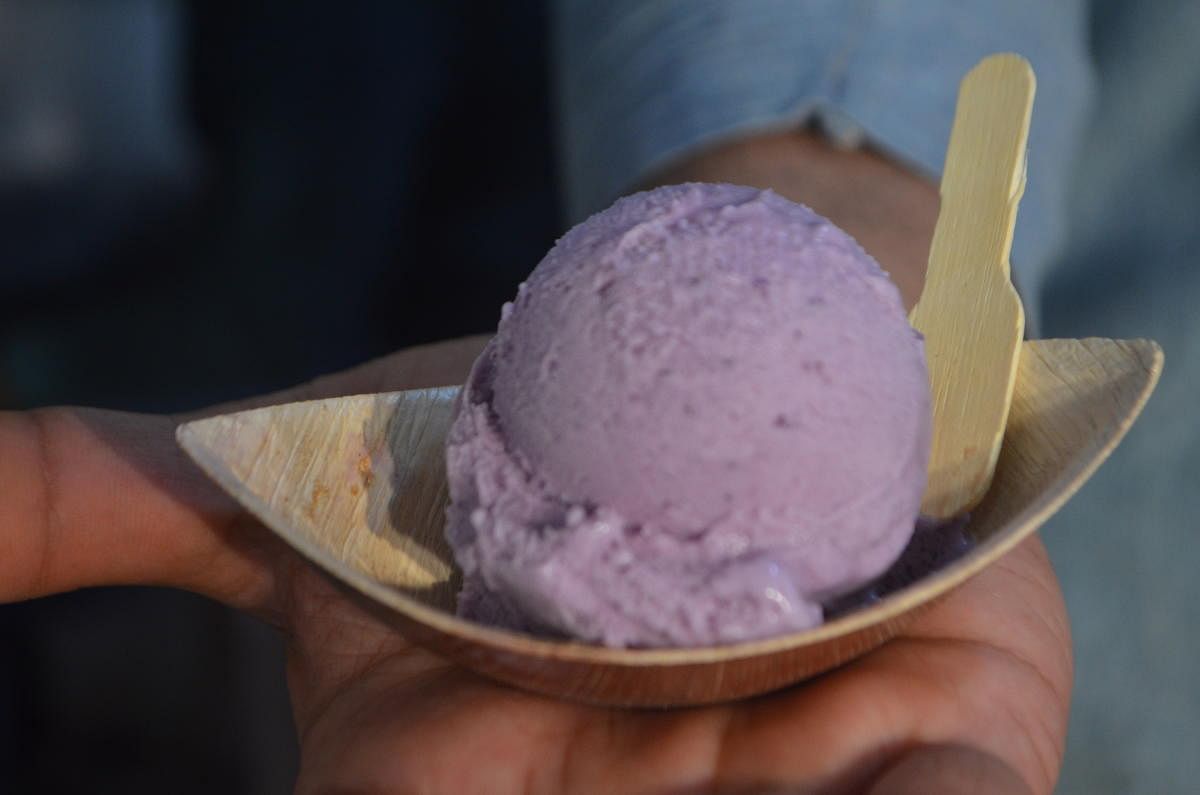
A rare and forgotten tuber is slowly making an appearance in the markets in Karnataka. Deepak Mangesh G Ror purple yam is popular in Southeast Asian countries like the Philippines and Indonesia, where it is known as ube. It is an important crop in Melanesia, where it is grown for ceremonial purposes.
Closer home, the forest-dwelling communities around the Nagarahole forest call it neeli kachalu, while it is known as konfal in some regions of Maharashtra and mukkizhangu in Kerala, where it is sold for Rs 120 per kilo.
“Our elders, who migrated to the Wayanad region of Kerala, brought purple yam to the villages surrounding Nagarahole forest. We have been cultivating this tuber since then. We keep some for our own consumption, and take the rest to Kerala and sell it there,” says Sannappa, a youth belonging to an indigenous community in H D Kote taluk.
G Krishna Prasad, the founder of an organic seed company, has been actively involved in promoting this unique edible root, which he received as a gift in 2008. “We had forgotten to plant it and during monsoon, the tuber sprouted by itself,” he says.
He simply planted the root in a patch of land near his house. “We harvested a basket full of purple yam that year,” he says.
"Not just purple yam, all tubers are easy to grow and has a lot of potential. Kerala has been smart and has done better in this respect," says Krishna Prasad.
Of late, the yam has also made an appearance in the “Roots and Tuber” melas in Mysuru and Joida, where it has piqued the interest of several people.
Up close, the colour of the tuber ranges from a vivid purple to a bright lavender, which it derives from the pigment anthocyanin.
Health food
Rich in starch, vitamins and anti-oxidants, the purple yam is also the go to health food. Its nutty sweet flavour means that the purple yam is used to prepare several sweet and savoury dishes.
The baked yam is just as soft as a potato.
“Ube is very popular in Filipino cuisine. Ube halaya, a creamy yam-based jam, one of the classic desserts of the Philippines, is quickly gaining traction all over the world. Ube chips, ube pandasal (cream buns) are also very popular,” says Bhargavi Mahesh Sekar, a food enthusiast.
Bhargavi introduced the purple yam ice cream recipe to Suhas, a young entrepreneur in Dakshina Kannada who sells natural fruit ice creams.
“I was stunned by the colour when we ground the yam for the batter. We got attractive purple colour ice cream, which was one of the main attractions of this year’s Mysuru Tuber Mela,” Suhas says.
In Gujarat, the purple yam is used to prepare undhiyo, a mixed vegetable delicacy that includes raw banana, purple yam, 3 - 4 types of beans and brinjals.
Stir-fried purple yam chips are consumed during fasting in Maharashtra.
“Purple yam can be served as palya (vegetable side dish), can be used in a traditional South Indian sambar, biryani and desserts. Purple powder is used to impart a natural colour for rice, cakes, candy, and jams,” says Seema Prasad, a food enthusiast.
Now, Sahaja Samruddha, an organic farmers collective is encouraging local farmers in H D Kote, Hunsur, Periyapatna taluks to grow this lesser-known tuber and is providing them with marketing assistance. They are also educating consumers about the health benefits of the purple yam through various initiatives.
To the fore
Roots and Tuber Melas, initiated by food and nature enthusiasts in Uttara Kannada's Joida taluk and later held regularly by various organisations over the past decade, have become a major platform to showcase the state's tuber diversity and popularise their use.
These resilient, nutrient-rich crops are not resource-intensive and adapt easily to diverse environmental and soil conditions and a variety of farming systems.
A Tuber Mela is being organised on February 27 and 28 in Dharwad.
More than 20 different groups, including members of the Jenu Kuruba, Siddi, Soliga, Irula and Kunbi communities, who are the custodians of the state's tuber diversity, are participating in the fair, along with their tuber collection.
